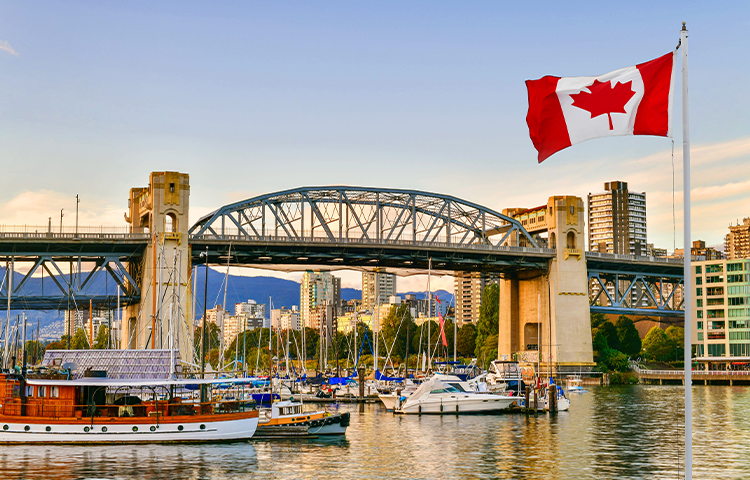Connect with our Canadian Immigration advisors
How Many Immigrants Came to Canada in 2024?
- Admin
- Processing Times
- September 29, 2025

Canada’s immigration levels have long been a topic of both national pride and practical significance for people across the country. As more Canadians—whether recent immigrants, prospective newcomers, or simply citizens—seek to understand the evolving demographic landscape, it’s essential to explore the latest facts. Let’s unpack the numbers for 2024 with precision and clarity.
1. A Record-Breaking Year for Permanent Residents
In 2024, Canada welcomed an astonishing 483,591 permanent residents, marking the highest annual number since 1972, when comparable data began. This figure includes newcomers arriving through diverse routes: economic immigration streams, family reunification, refugees, and humanitarian pathways. Another source cites a similar figure—483,390 permanent residents—indicating consistent reporting across platforms.
Top Source Countries
The most significant shares of new PRs came from:
- India: ~127,320
- Philippines: ~32,300
- China: ~29,950
- Other notable contributions from Cameroon, Nigeria, Eritrea, and Ukraine
Also Read: Can You Apply for Express Entry While On A Student Visa?
2. The Role of International Migration in Canada’s Growth
Canada’s overall population increased by 744,324 individuals in 2024, equivalent to a growth rate of 1.8%, primarily driven by international migration. Nearly 97.3% of that growth stemmed from immigration—both permanent and temporary—while natural increase (births minus deaths) contributed only about 2.7%.
3. Shifts in Temporary Residency
While permanent immigration soared, the growth in the number of non-permanent residents (students, temporary workers, asylum claimants, etc.) slowed markedly. In 2024:
- The stock of non-permanent residents rose from 2,729,771 on January 1 to 3,020,936 on January 1, 2025—a net increase of 291,165, significantly lower than the 820,766 rise observed in 2023.
- Furthermore, in the third quarter alone, the net increase in non-permanent residents was just 47,187, the smallest Q3 increase since 2015.
4. What Changed Policy-wise in 2024?
The government took steps to recalibrate immigration, citing housing affordability and infrastructure pressures:
- Immigration targets were revised downward: although 2024 hit near-record PR levels, projections for 2025 were trimmed to 395,000, moving in the direction of balancing growth with service capacity.
- A targeted reduction (20%) in temporary resident numbers was enacted, aiming to limit their share to around 5% of the population.
- Quebec even introduced a moratorium on key immigration streams for skilled workers and graduates, reflecting regional housing and capacity concerns.
- For international students specifically, a 35% cap reduction on new study visas was implemented for 2024, with a limit of 364,000, down from nearly 560,000 the previous year.
5. Summary Table: Key Figures for 2024
| Category | 2024 Figure |
|---|---|
| Permanent Residents (PRs) | ~483,591 |
| Total Population Growth | ~744,324 (1.8%) |
| Share From Immigration | ~97.3% of growth |
| Increase in Non-Permanent Residents | ~291,165 |
| Measures to Reduce Temporary Immigration | Yes (cap, moratoriums) |
What This Means for Canadians
- Unprecedented Permanent Immigration: The record-high PR levels indicate continued global interest in Canada as a destination. For communities across the country, this means enriched diversity, expanded labor markets, and stronger population renewal.
- Policy Adjustments Signal Sustainable Goals: The move to moderate immigration—particularly temporary streams—reflects a shift toward sustainable and manageable population growth. This balances economic growth with infrastructure capacity and public sentiment.
- Regional Differences Matter: Provinces like Quebec are already adjusting their intake to reflect local stresses, signaling that immigration policy is not one-size-fits-all.
- Looking Ahead: With projected PR levels expected to decline to 395,000 in 2025, 380,000 in 2026, and 365,000 in 2027, Canada is preparing for slower influxes. Still, immigration will remain central to population and economic growth, especially given low birth rates and an aging population.
Final Thoughts
In 2024, Canada welcomed over 483,000 permanent residents, solidifying its position as a leading immigration destination. At the same time, authorities began adjusting temporary immigration through visa limits and regional moratoriums—reflecting a careful balancing act between growth, public resources, and integration capacity. Whether you’re planning your own immigration, working with newcomers, or simply keeping an eye on Canadian demographics, these figures offer a window into how Canada is growing—both in numbers and in purpose.



